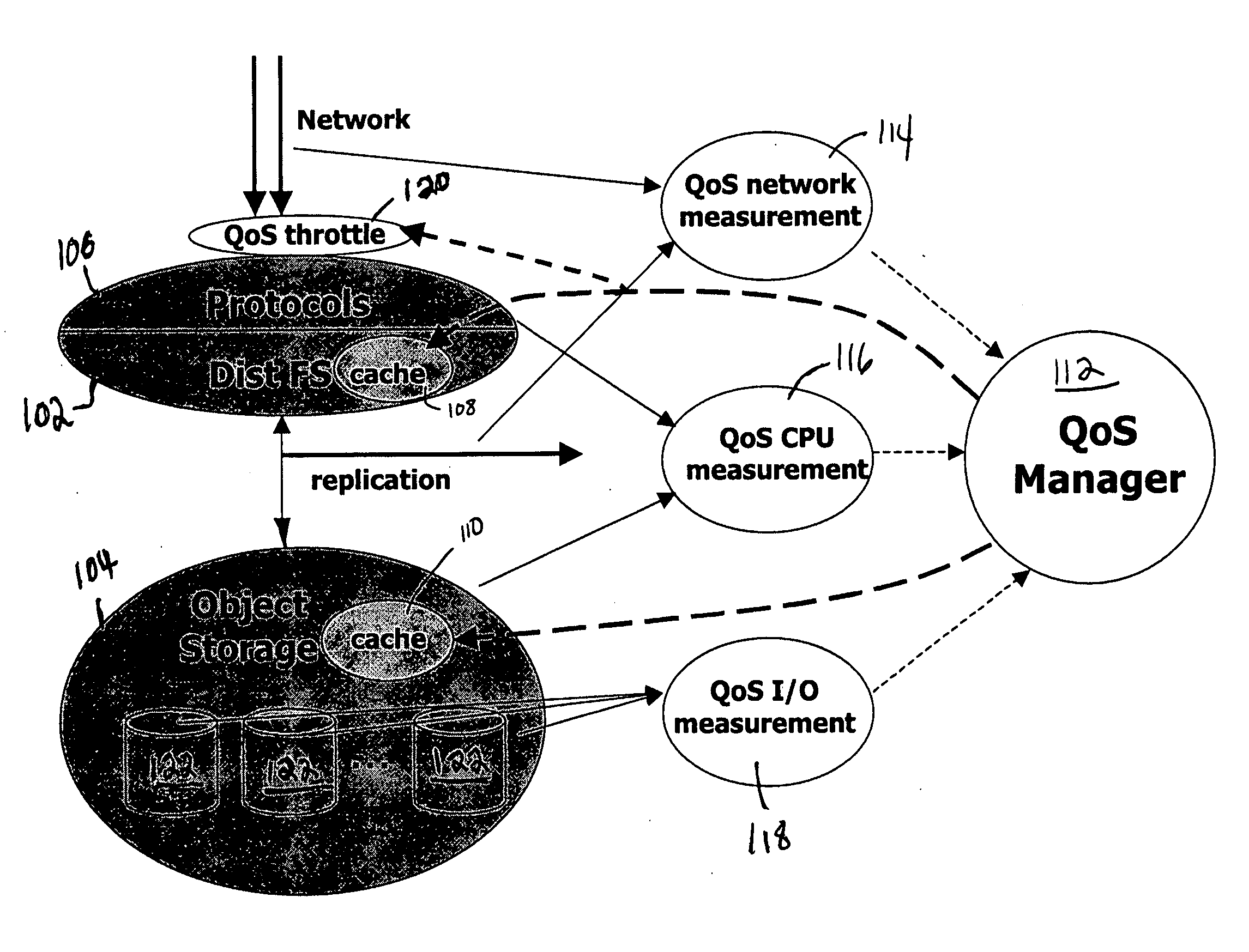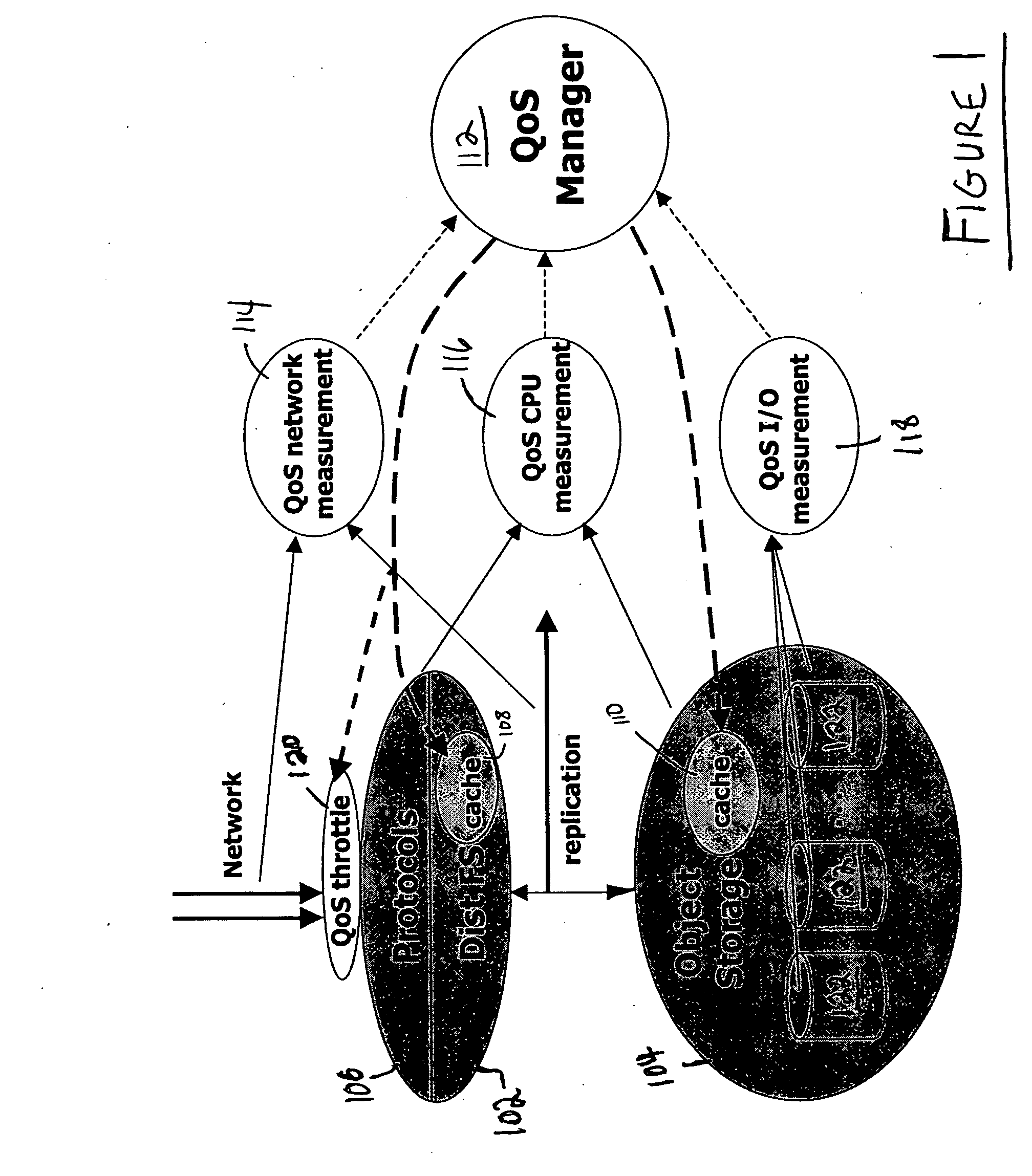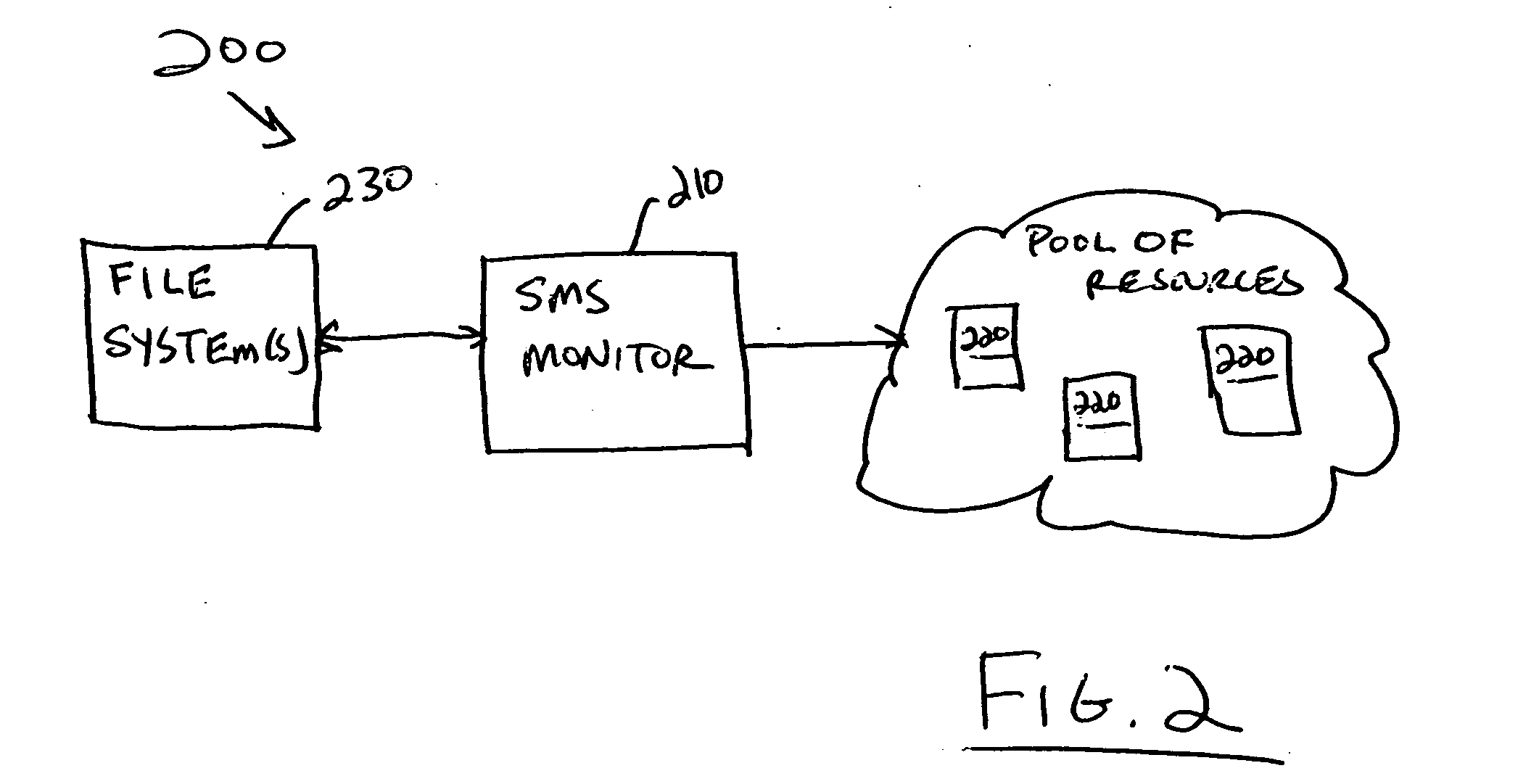System and method for managing quality of service for a storage system
- Summary
- Abstract
- Description
- Claims
- Application Information
AI Technical Summary
Benefits of technology
Problems solved by technology
Method used
Image
Examples
Embodiment Construction
[0021] The present invention will now be described in detail with reference to the drawings, which are provided as illustrative examples of the invention so as to enable those skilled in the art to practice the invention. The present invention may be implemented using software, hardware, and / or firmware or any combination thereof, as would be apparent to those of ordinary skill in the art. The preferred embodiment of the present invention will be described herein with reference to an exemplary implementation of a distributed storage system providing one or more file systems. However, the present invention is not limited to this exemplary implementation, but can be practiced in any computing system that includes multiple resources that may be provisioned and configured to provide certain functionalities, performance attributes and / or results.
[0022] Referring now to FIG. 1, there is shown an exemplary distributed storage system 100 incorporating a system and method for managing quali...
PUM
 Login to View More
Login to View More Abstract
Description
Claims
Application Information
 Login to View More
Login to View More - R&D
- Intellectual Property
- Life Sciences
- Materials
- Tech Scout
- Unparalleled Data Quality
- Higher Quality Content
- 60% Fewer Hallucinations
Browse by: Latest US Patents, China's latest patents, Technical Efficacy Thesaurus, Application Domain, Technology Topic, Popular Technical Reports.
© 2025 PatSnap. All rights reserved.Legal|Privacy policy|Modern Slavery Act Transparency Statement|Sitemap|About US| Contact US: help@patsnap.com



